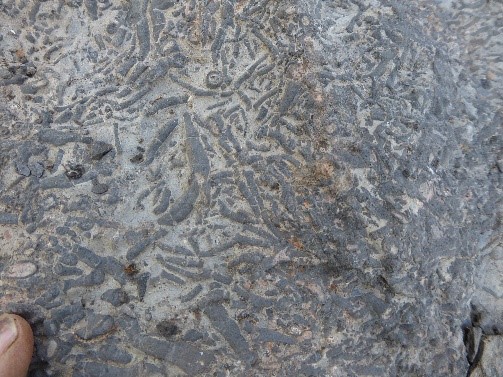Here you can see the most important limestone producers of the Auernig Formation, the calcareous algae. To perform photosynthesis, these organisms needed sunlight and therefore lived in the sea at depths of between ten and thirty metres. When they died, their calcareous skeleton disintegrated, mostly becoming a lime-based paste. The cases in which a skeleton has remained intact are rarer. Here you can see two of the most common types of calcareous algae: stick-shaped and salad leaf-shaped. Their scientific names are real tongue-twisters: Anthracoporella spectabilis and Archaeolithophyllum missouriense.
Cerca
Ultimi Post
- The temporary exhibition “The Wonders of the Underworld – Ampezzo, 20th June 2020
- The Geological Museum in Ampezzo opens next Saturday
- The temporary exhibition “Fossil fish from the Friulian Alps” opens again
- Coronavirus Emergency – extraordinary closing
- Presentation conference – book “INSIDE THE CARNIC ALPS” – Udine, 25th June 2019

